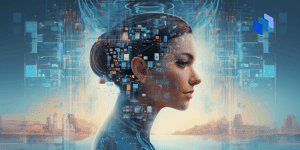What Does Artificial Intelligence (AI) Mean?
Artificial intelligence (AI), also known as machine intelligence, is a branch of computer science that focuses on building and managing technology that can learn to autonomously make decisions and carry out actions on behalf of a human being.
AI is not a single technology. Instead, it is an umbrella term that includes any type of software or hardware component that supports machine learning, expert systems, generative AI and certain types of robotics.
Today’s AI predominantly operates on conventional CMOS-based hardware and incorporates a blend of traditional algorithms and data-driven machine learning models.
As the technology has become more embedded in everyday applications, however, there’s been growing interest in neuromorphic engineering, an area of research that seeks to emulate the human brain’s architecture through the design of specialized hardware and algorithms optimized for low power consumption and real-time processing.
AI Use Cases in Business
AI is currently being applied to a range of functions both in the lab and in commercial/consumer settings, including the following technologies:
- Artificial Neural Networks are computational models inspired by the structure and functioning of the human brain. They consist of interconnected nodes (neurons) that process and transmit information, enabling the network to learn patterns and relationships from data through training.
- Deep learning is an iterative approach to artificial intelligence that stacks machine learning algorithms in a hierarchy of increasing complexity and abstraction. Deep learning is currently the most sophisticated AI architecture in use today.
- Speech Recognition allows an intelligent system to convert human speech into text or code.
- Natural Language Generation enables conversational interaction between humans and computers.
- Computer Vision allows a machine to scan an image and use comparative analysis to identify objects in the image.
- Expert systems gain were one of the early AI technologies developed in the 1970s and 1980s. These systems aimed to capture the knowledge and decision-making processes of human experts in specific domains and use that knowledge to provide recommendations or make decisions. While expert systems might not be as widely discussed as more recent AI technologies like deep learning and neural networks, they still have practical applications in healthcare, finance, and engineering.
Techopedia Explains Artificial Intelligence (AI)
While AI often invokes images of the sentient computer overlord of science fiction, the current reality is far different. In the real world, AI systems are specialized tools designed to perform specific tasks, such as image recognition, language translation, or data analysis. These systems lack consciousness, emotions, and self-awareness. Instead, they operate based on algorithms and patterns learned from data, and their capabilities are bounded by their programming and training.
What are the types of AI and how do they differ?
AI is often spoken about in terms of being either weak or strong. Today, most business applications of AI are machine-learning applications of weak AI.
- Narrow (Weak) AI is capable of performing only a limited set of predetermined functions.
- General (Strong) AI is said to equal the human mind’s ability to function autonomously according to a wide set of stimuli;
- Super AI is expected one day to exceed human intelligence (and conceivably take over the world).
AI initiatives are also talked about in terms of their belonging to one of four categories:
- Reactive AI relies on real-time data to make decisions.
- Limited Memory AI relies on stored data to make decisions.
- Theory of Mind AI can consider subjective elements such as user intent when making decisions.
- Self-Aware AI possesses a human-like consciousness that is capable of independently setting goals and using data to decide the best way to achieve an objective.
A good way to visualize these distinctions is to imagine AI as a professional poker player. A reactive player bases all decisions on the current hand in play, while a limited memory player will consider their own and other player’s past decisions.
A Theory of Mind player factors in other player’s behavioral cues and finally, a self-aware professional AI player stops to consider if playing poker to make a living is really the best use of their time and effort.
The Difference Between AI and Machine Learning
Machine Learning (ML) is a subset of AI that focuses on building models that allow computers to learn from data. Instead of being explicitly programmed to perform a task, ML models use data to make predictions or decisions.
Essentially, all ML is AI, but not all AI uses ML techniques. For example, rule-based expert systems and symbolic AI fall under the AI umbrella but don’t necessarily involve learning from data in the way ML does.
The Evolving Stages of Artificial Intelligence
Artificial intelligence can be allowed to replace a whole system, making all decisions end-to-end, or it can be used to enhance a specific process. A standard warehouse management system, for example, can show the current levels of various products, while an intelligent one could identify shortages, analyze the cause and its effect on the overall supply chain and even take steps to correct it.
The demand for faster, more energy-efficient information processing is growing exponentially as AI becomes more prevalent in business applications. Conventional digital processing hardware cannot keep up with this demand. That is why researchers are taking inspiration from the brain and considering alternative architectures in which networks of artificial neurons and synapses process information with high speed and adaptive learning capabilities in an energy-efficient, scalable manner.





